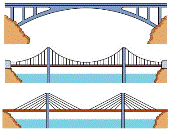Civil and Environmental Engineering, Department of

Department of Civil and Environmental Engineering: Faculty Publications
Document Type
Article
Date of this Version
10-2021
Citation
Journal of Water Process Engineering 44 (2021) 102382
Abstract
Algae is an appropriate natural resource to augment the optimal use of undesired ions in water and wastewater. Increasing algal cells, the consumption of particular ions, including chloride, nitrate, phosphate, and ammonium, provides a suitable way to optimize water treatment processes. Different algal species have the capability to survive in extreme salinities by developing resistance against osmotic pressure in saline water. The current study reviews the effect of salinity on algal biomass production, algal growth rate, chlorides, nitrates, phosphates, chemical oxygen demand (COD), total nitrogen, total phosphorus, and ammonium ions. Mainly algae cultivated in freshwater, synthetic brackish water, seawater, and hypersaline water, were studied for this review. Various ion uptake mechanisms used by the algal cell are summarized, focusing on biosorption and bioaccumulation processes. Critical parameters such as light intensity, pH, and temperature variations significantly influence ion and nutrients uptake efficiencies. Analysis performed on collected data indicated that halophytic algae could survive in high salinities at elevated growth rates compared to freshwater. The halotolerant algal species showed an inclining trend of chloride ion removal with an elimination capacity of 7.5 g.m-3.h-1. Moreover, the nitrate uptake rate in halophytic algae is 10-folds higher to phosphate, regardless of salinity level. It could be concluded that microalgae will be beneficial for ion and nutrient uptake processes in treating high saline water.


Comments
U.S. government work